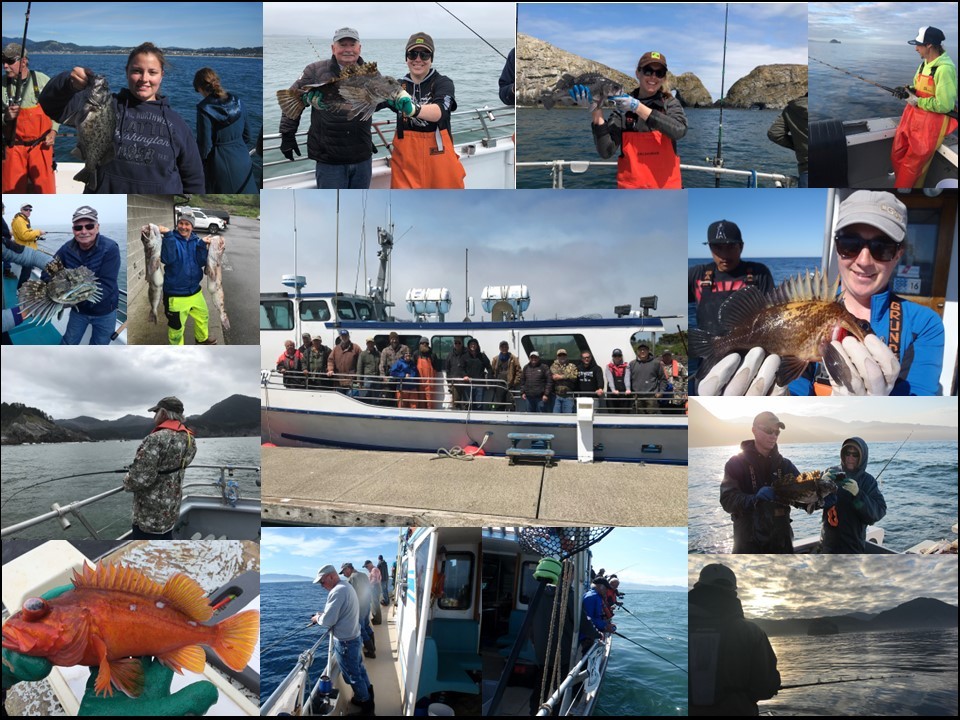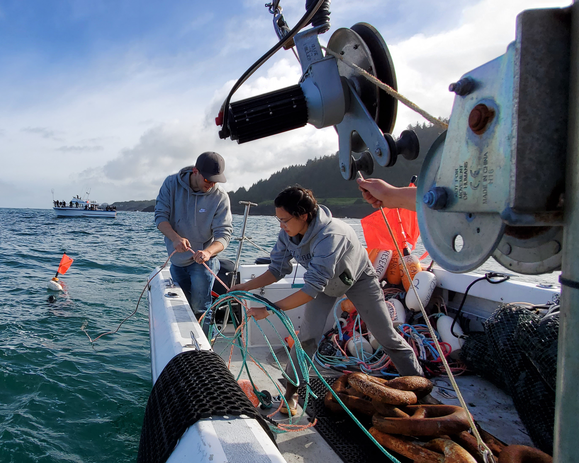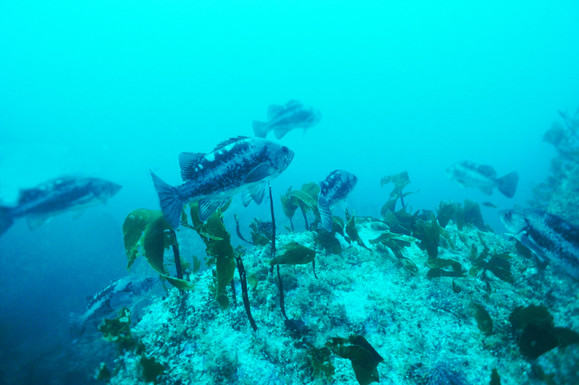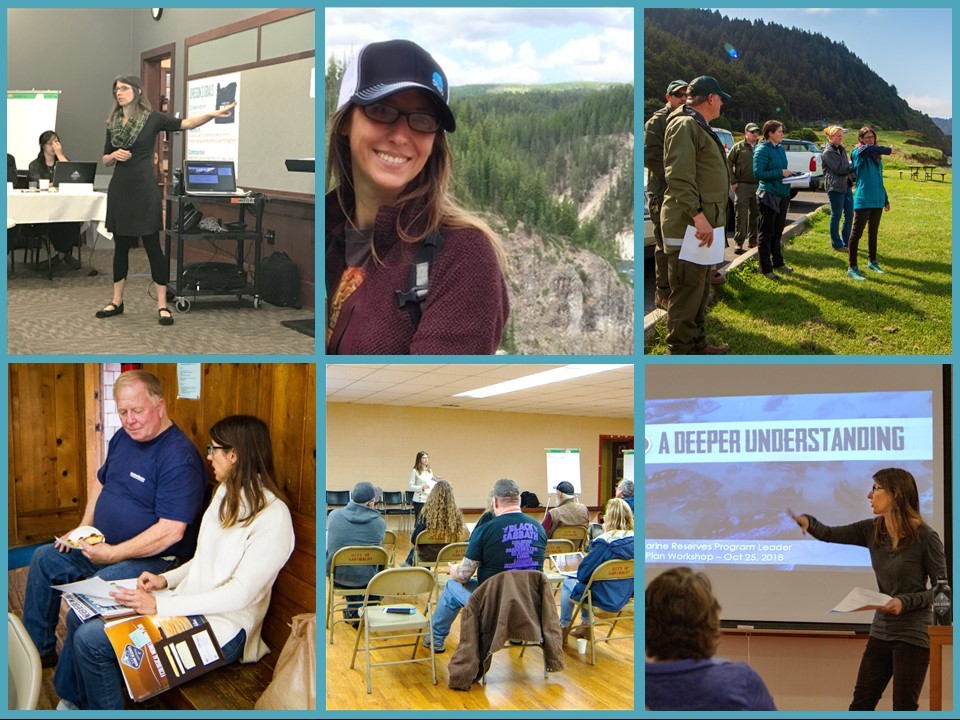Marine Reserves News: What We've Learned at Cascade Head After 8 Years
ODFW sent this bulletin at 06/30/2022 07:00 AM PDT
Photo: Black Rockfish (Sebastes melanops) school near a reef at Cascade Head Marine Reserve. We are excited to release the ‘Cascade Head One-Pager’ this month! We invite you to read this snapshot overview of our findings from the 2022 Synthesis Report as we report key findings at the Cascade Head Marine Reserve. We detail the important role Black Rockfish play in structuring fish communities and share interesting results from the ODFW remotely operated vehicle (ROV) survey of sea stars. The Cascade Head Marine Reserve One-Pager is the third of a series, highlighting findings from our ecological monitoring efforts for each individual marine reserve, based on our recent Marine Reserves Program Synthesis Report. The synthesis report was released back in February and is currently available for the public to download. Our One-Pager snapshot summaries focus on the most salient findings from our research activities at each marine reserve. In the coming months we will be publishing additional One-Pagers for each of Oregon’s two remaining reserve sites.  Recreational Fishing Community Study Published Photo: Recreational anglers show off their catch We are pleased to announce that our human dimensions program published a new study about Oregon recreational fishers’ knowledge, support and perceived impacts of marine reserves. This large-scale online survey targeted recreational anglers (n = 7,638) across the state of Oregon to learn what impacts the marine reserve system had on the recreational fishing community. Overall this study found that impacts of marine reserve implementation on the Oregon recreational fishing community have been minimal in aggregate. Opposition to Oregon’s marine reserves was quite low (9.9%), but was higher among avid saltwater fishers, those who consider angling central to their lifestyle, and respondents whose fishing behavior had been impacted by marine reserve establishment. Among those few who were displaced, most found substitute saltwater fishing grounds. To learn more about the Human Dimensions Research that the marine reserves program has been conducting over the last 10+ years on our website here: https://oregonmarinereserves.com/science/human-dimensions/ Bon Voyage Cristen!
Photo: Cristen Don communicates about the marine reserves to members of the public. The marine reserves team bid farewell to their program leader Cristen Don this past month. Known for her calm demeanor and love of surfing, Cristen shepherded the marine reserves program from its infancy during the planning process through the implementation of all five sites in place today. Her dedication led to the recruitment of permanent staff positions for the ecological, human dimensions and outreach and community engagement aspects of the program. She worked with local communities and stakeholders to write the first site management plans for Cape Falcon, Cascade Head, Otter Rock, Cape Perpetua, and Redfish Rocks marine reserves. She was our liaison to partners such as Oregon State Police (OSP), Oregon Parks and Recreation Department (OPRD), and Department of Land Conservation and Development (DLCD) for all marine reserves related issues. She spoke on behalf of the program to legislators, the Ocean Policy Advisory Council (OPAC), the Science and Technical Advisory Committee (STAC), as well as academic, conservation, fishermen and community stakeholders. It was her vision that led to the Marine Reserves Program Synthesis Report, which provides a comprehensive overview of the first 10 years of marine reserves implementation. Cristen spent a total of 18 years with ODFW. Prior to working on marine reserves, she was instrumental in developing the first version of Oregon’s Nearshore Strategy and worked on reviewing potential environmental impacts of Oregon’s first wave energy project proposals. She will be missed, and we wish her luck on her future adventures. Lindsay Aylesworth, the research project leader for the ecological team has stepped in to act as interim project leader until a permanent replacement is found. Reports from the Field - June 2022 Photo: Oregon State University collaborators deploy a SMURF, a 'Standardized Monitoring Unit for the Recruitment of Fishes', in order to study juvenile fish in the marine reserves. This month staff ran a virtual training for volunteer biological assistants to support Hook-and-Line surveys this fall. We also continued field work efforts for several projects:
Explore More Marine Reserves News
|

OREGONMARINERESERVES.COM
Oregon Department of Fish and Wildlife2040 SE Marine Science Dr. Newport, OR 97365 (541) 867-4741
|



